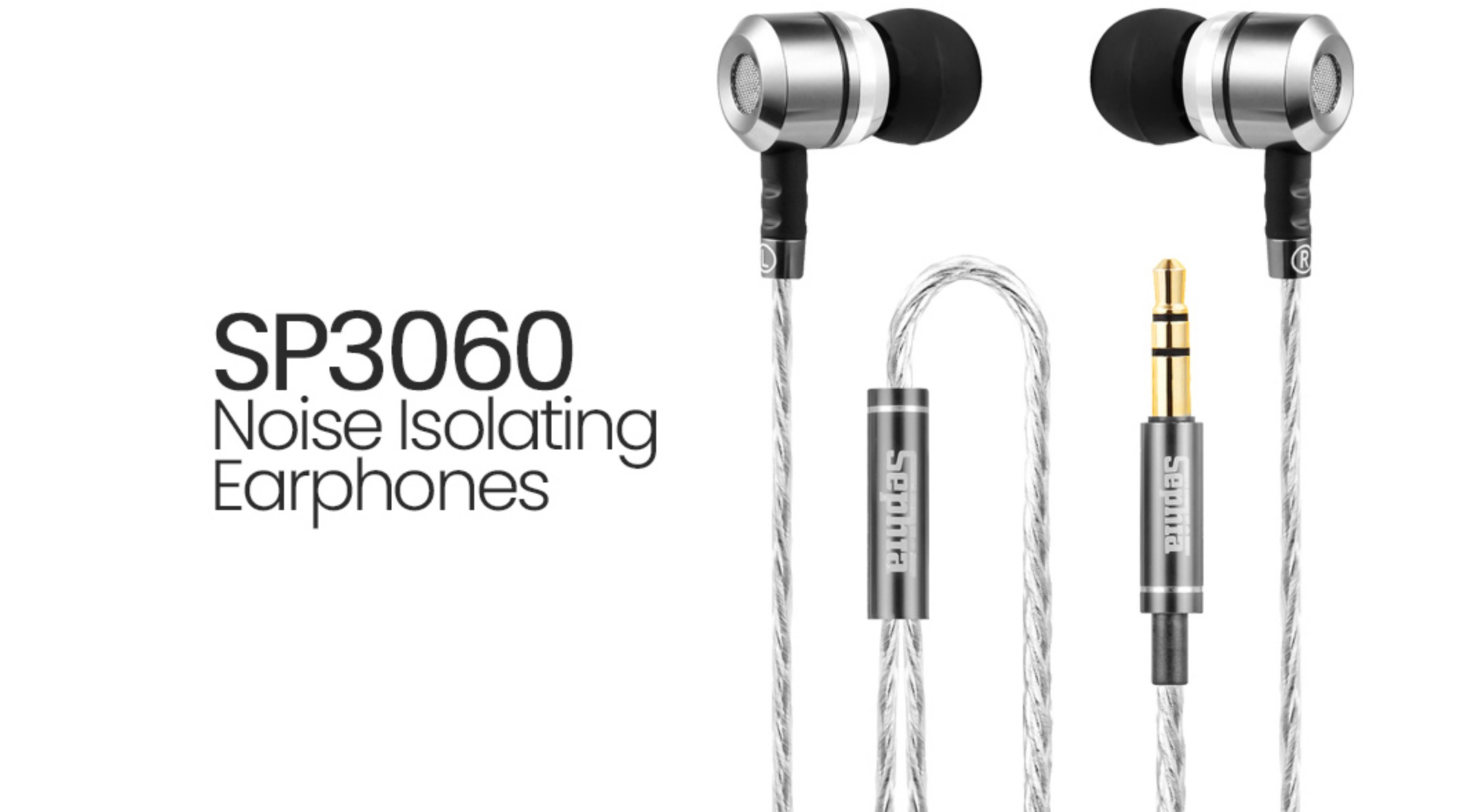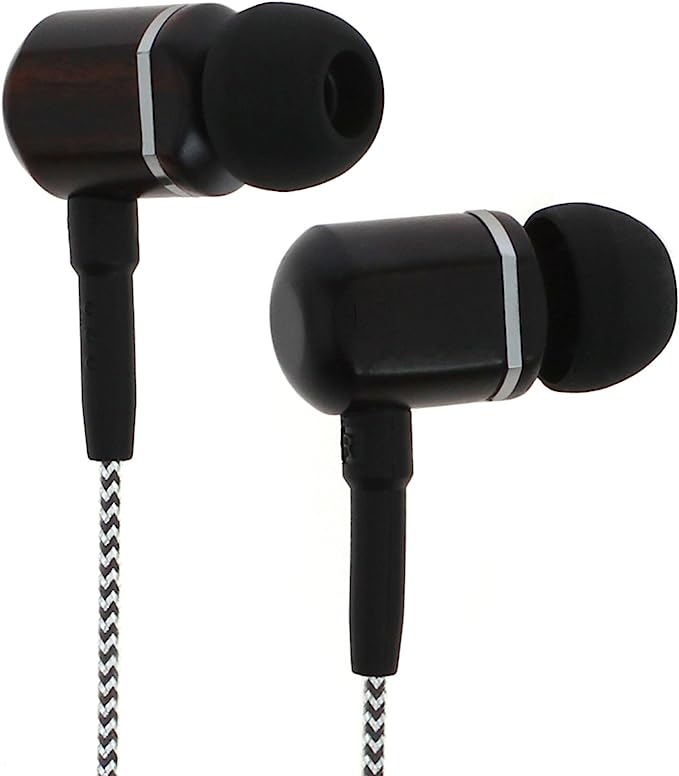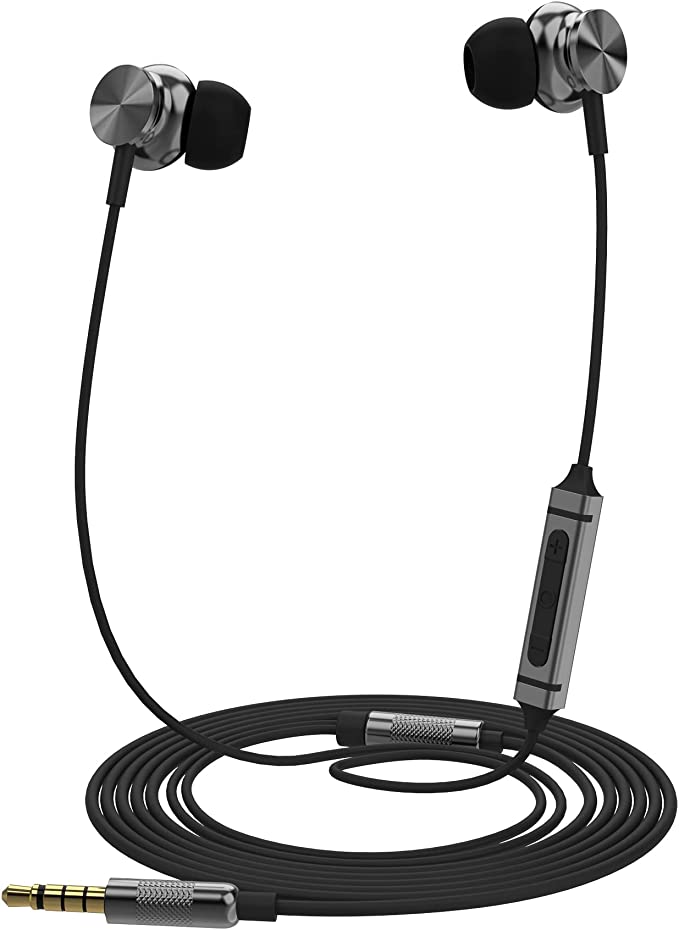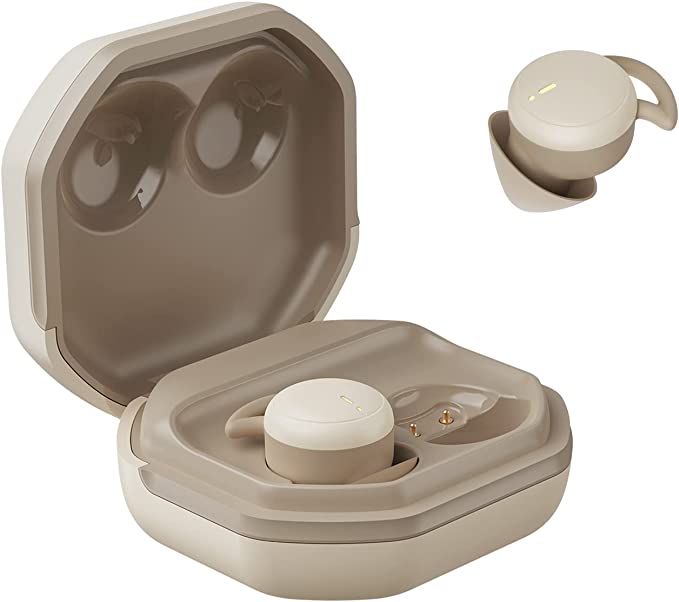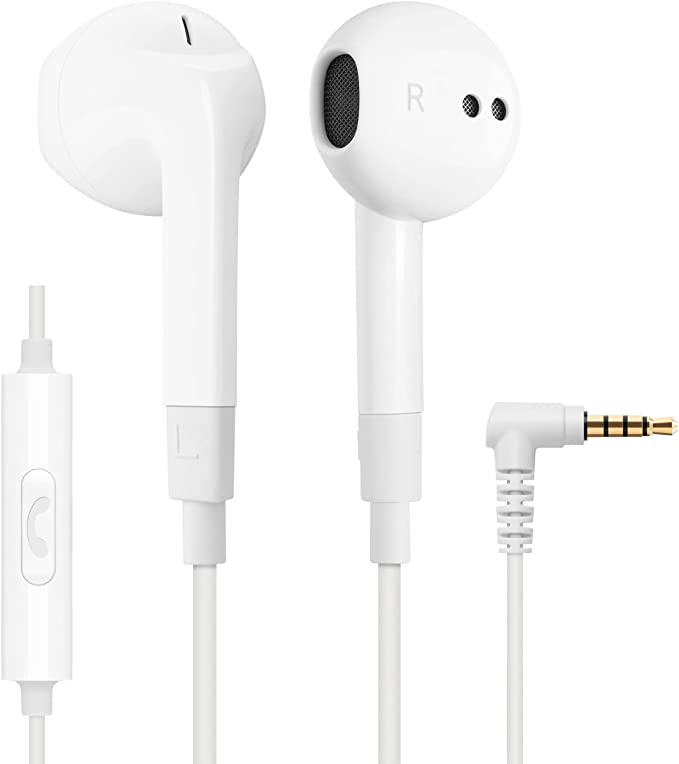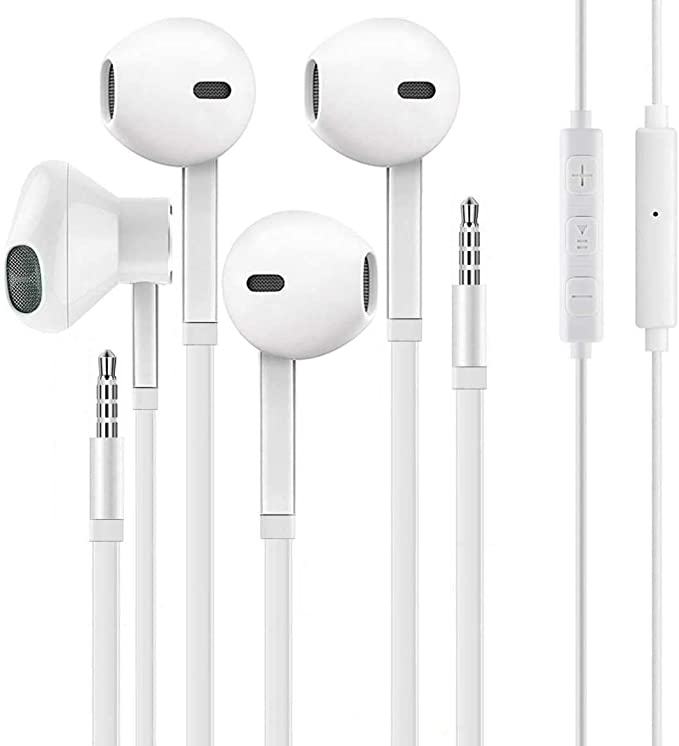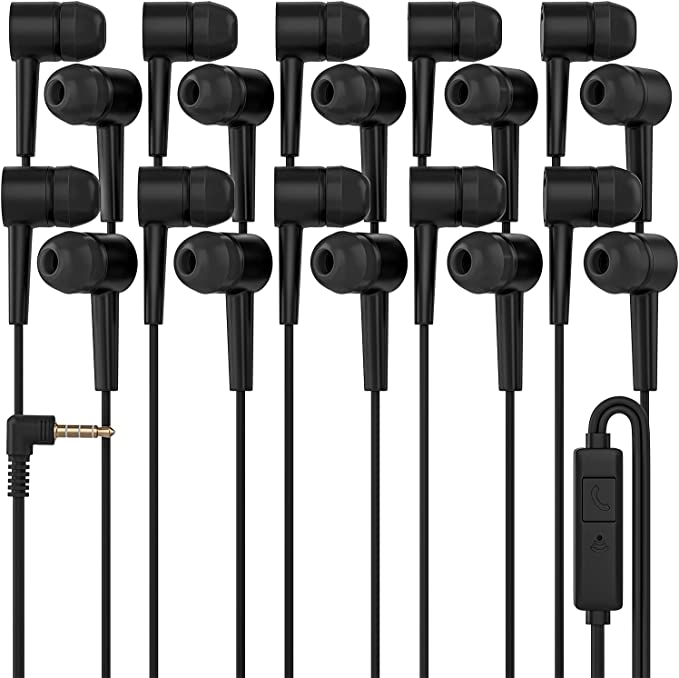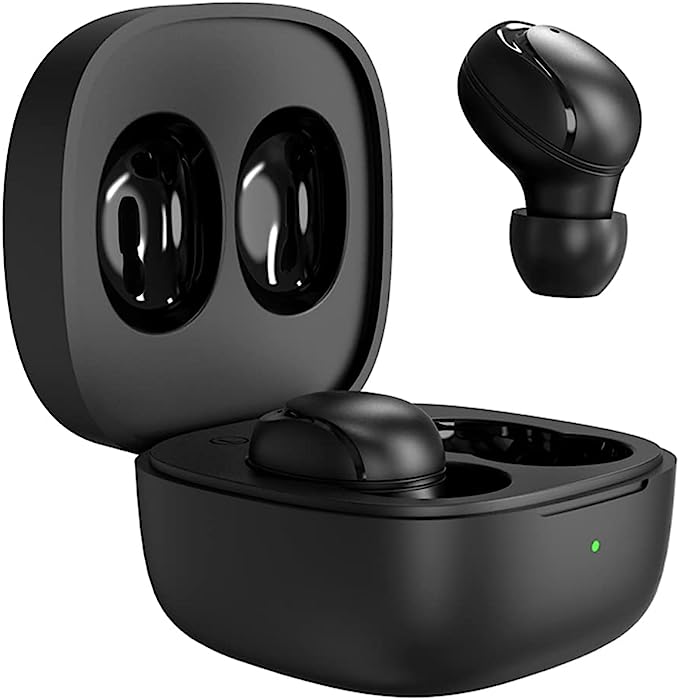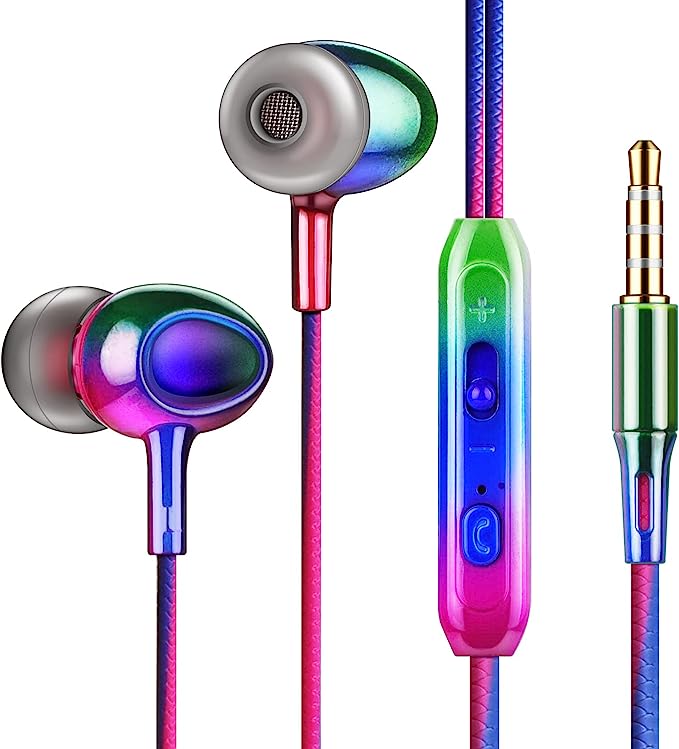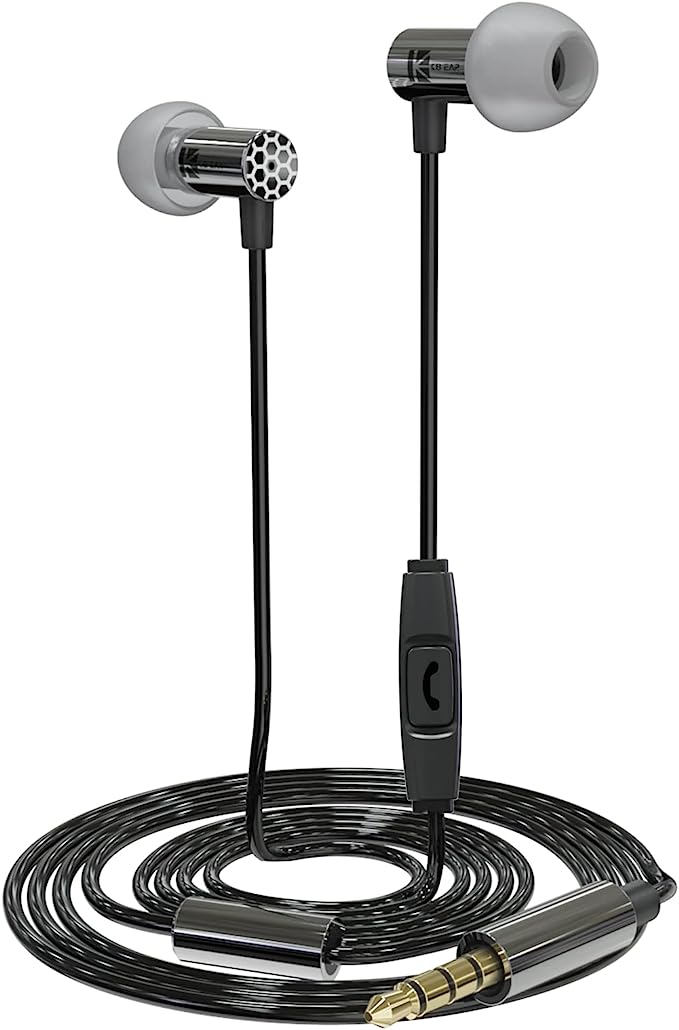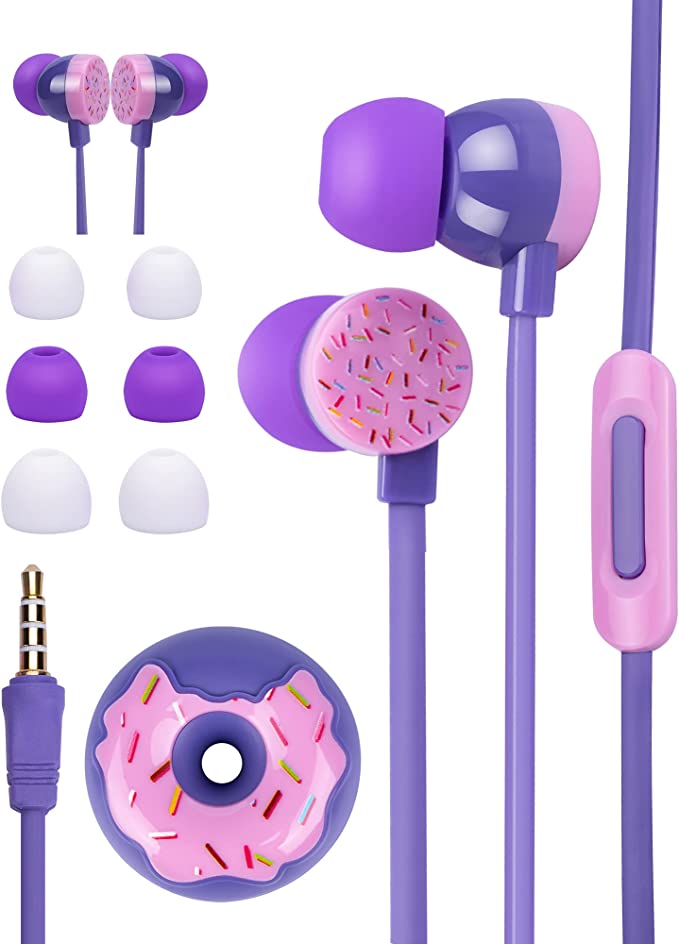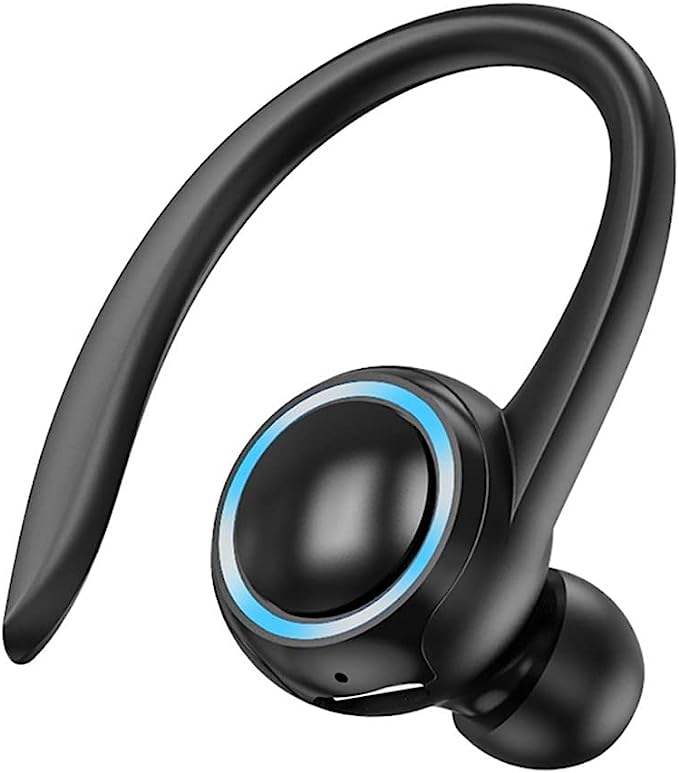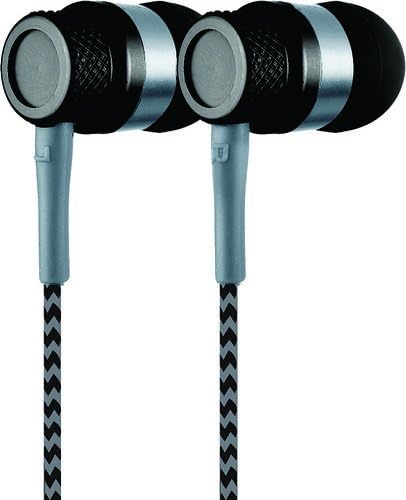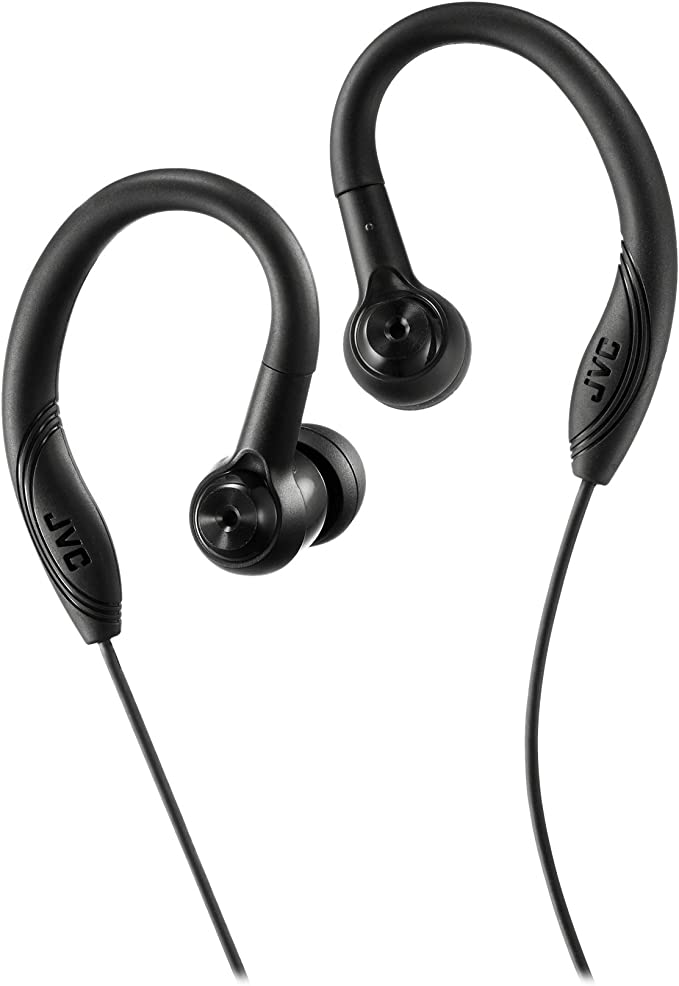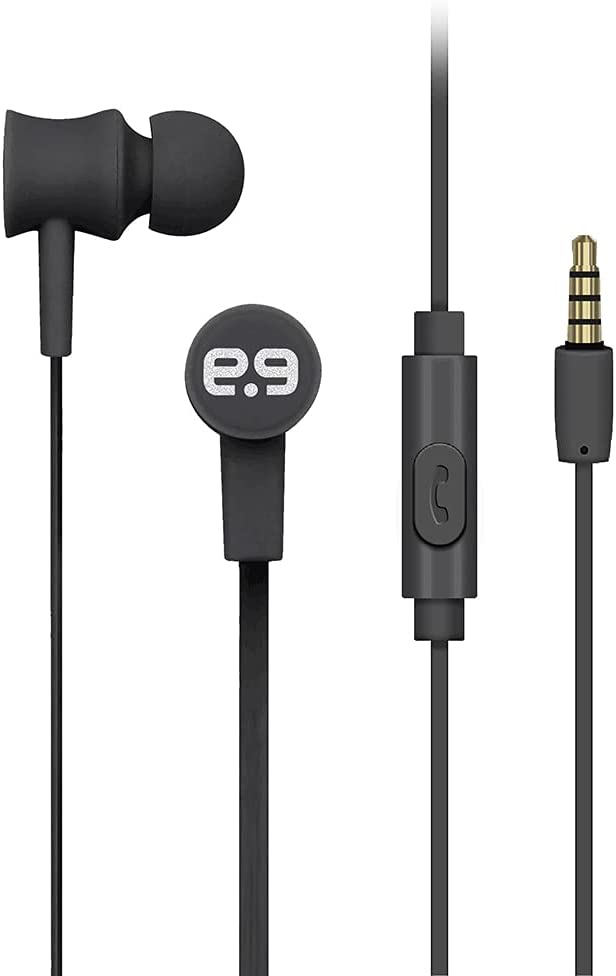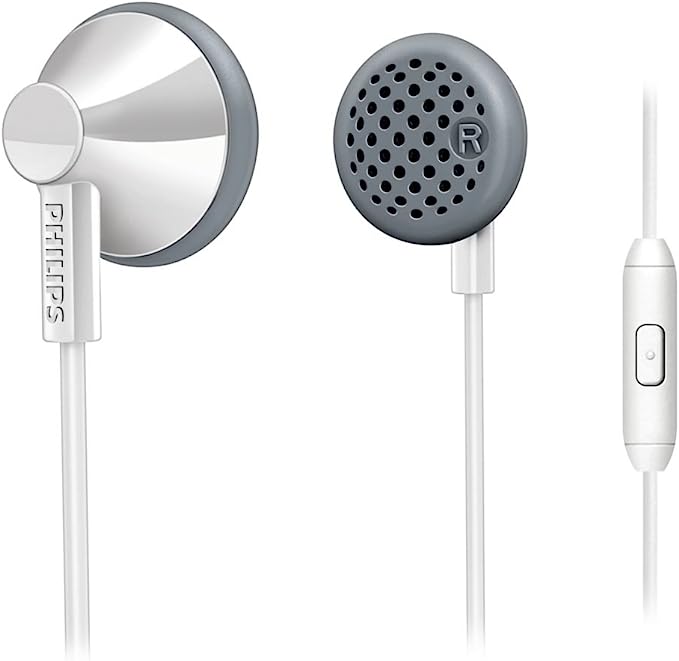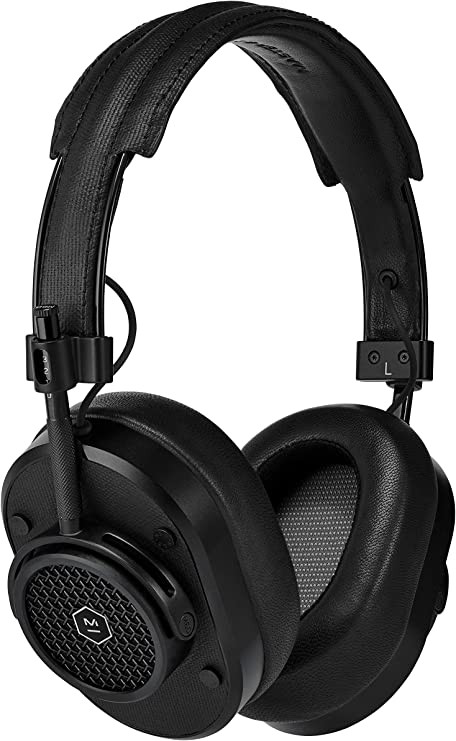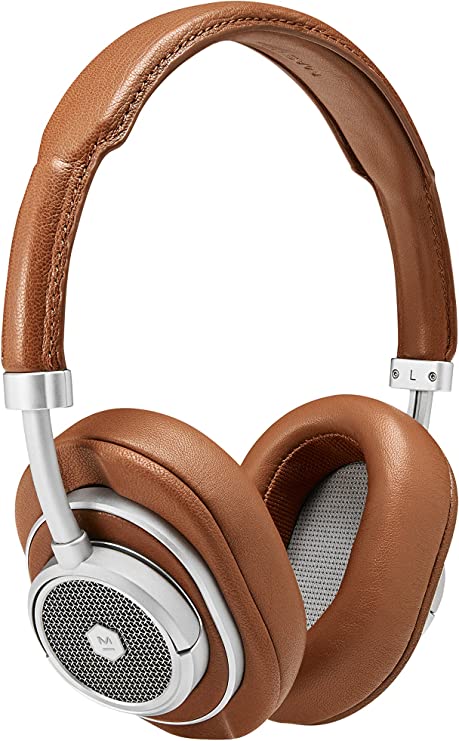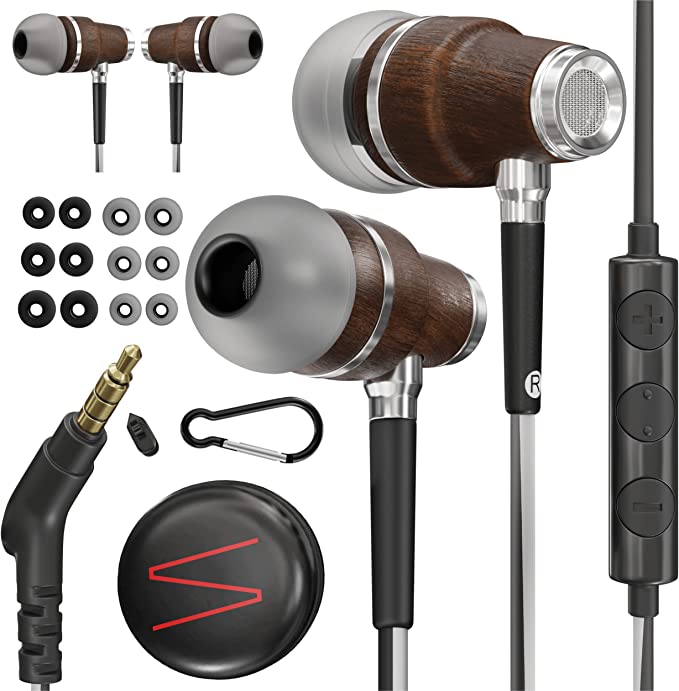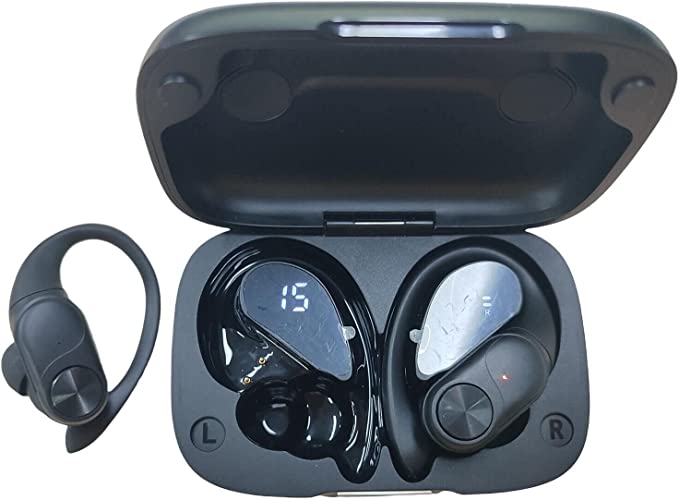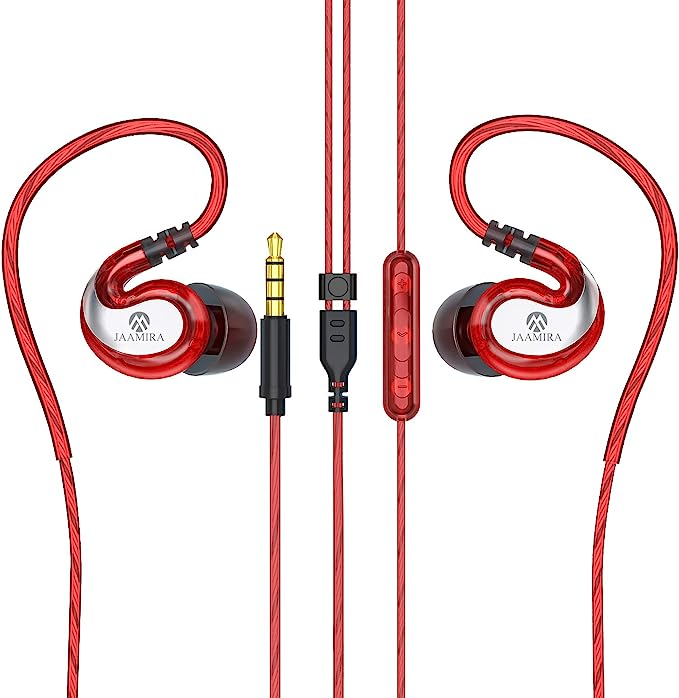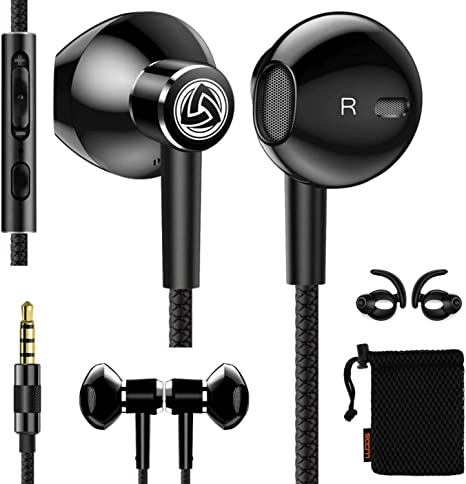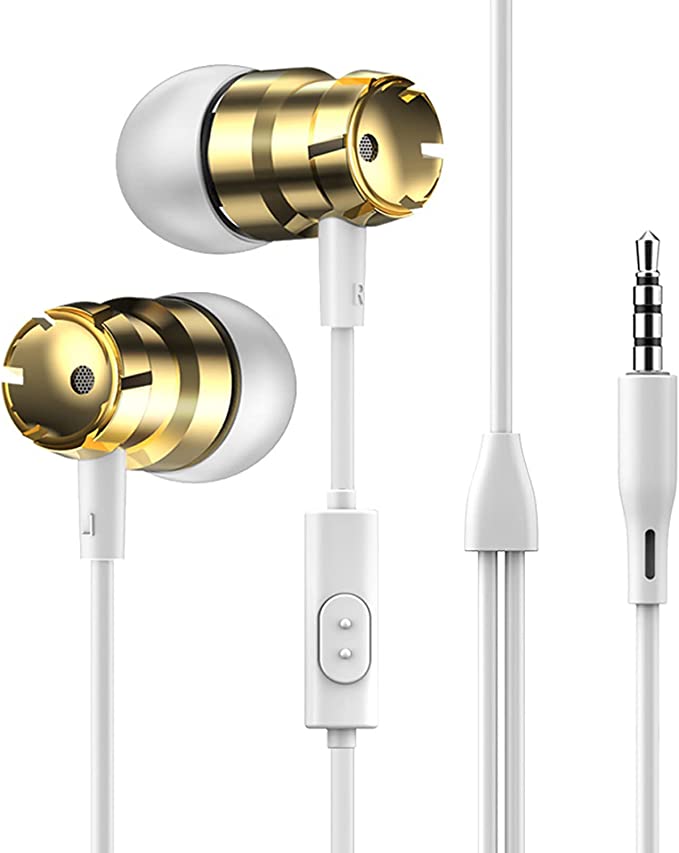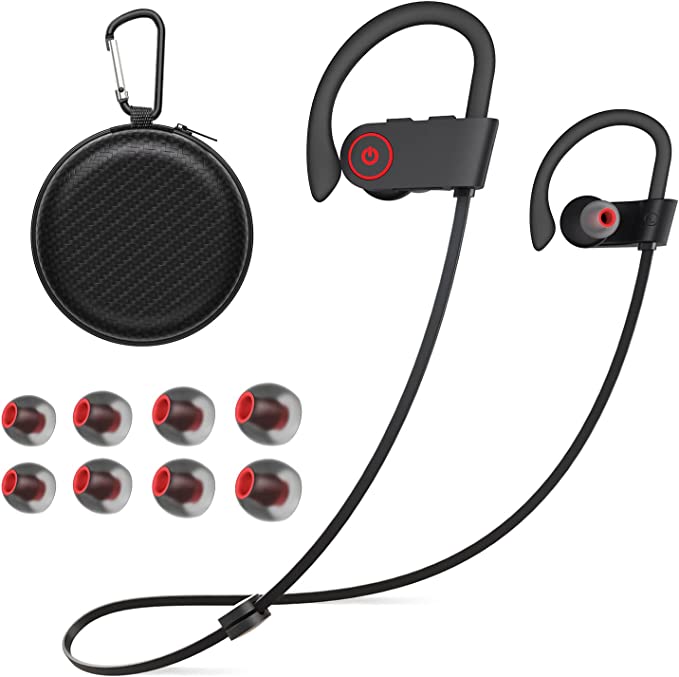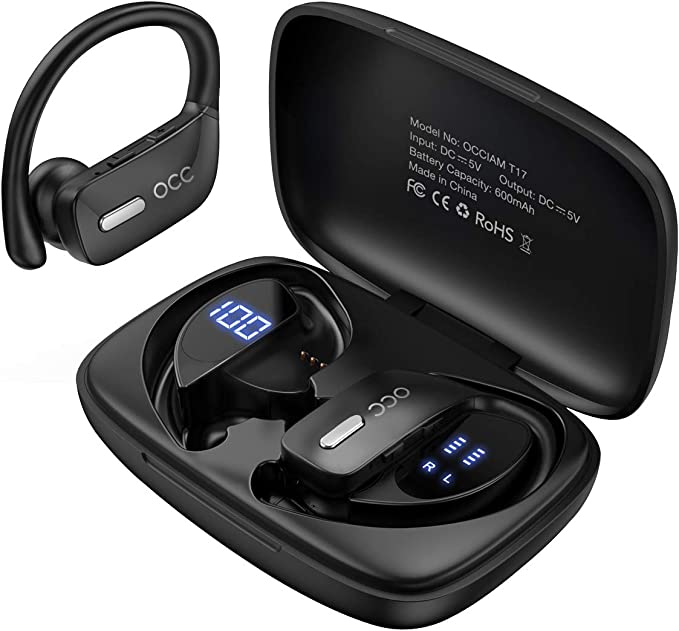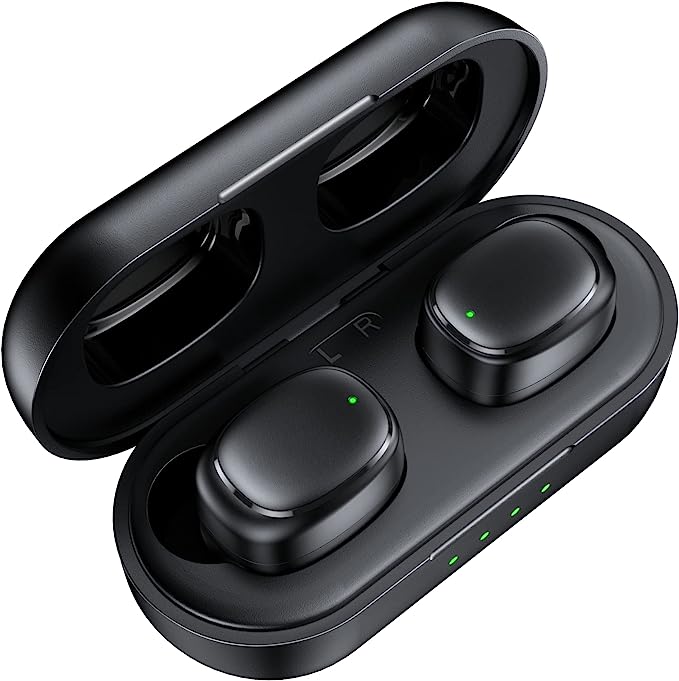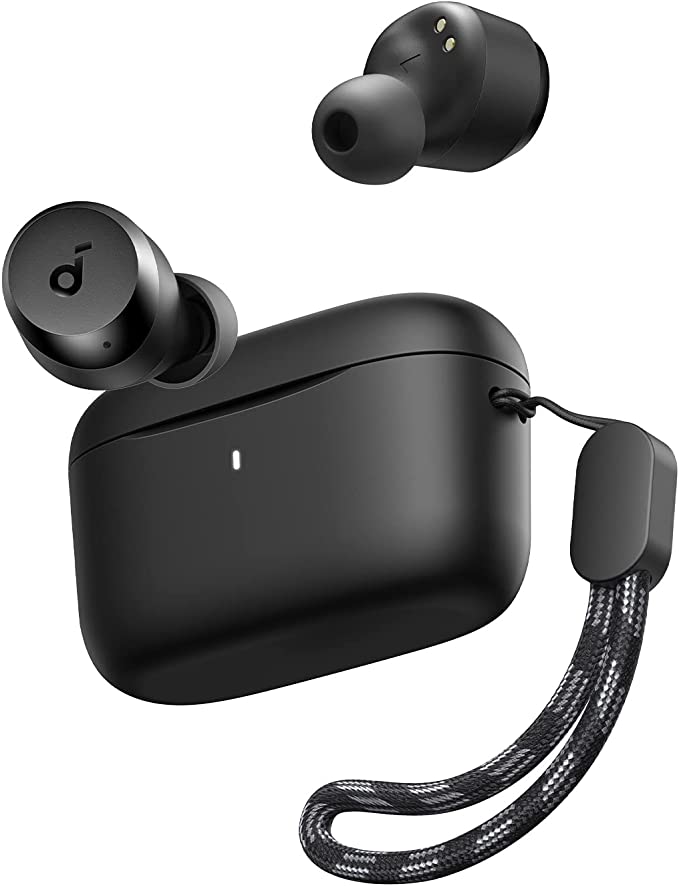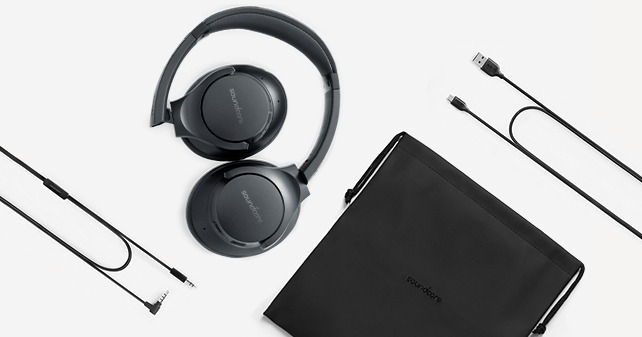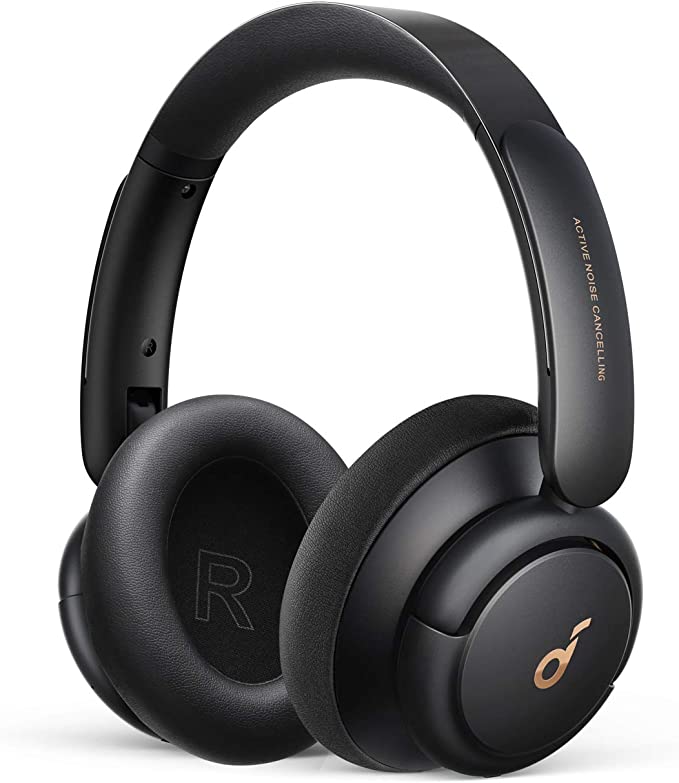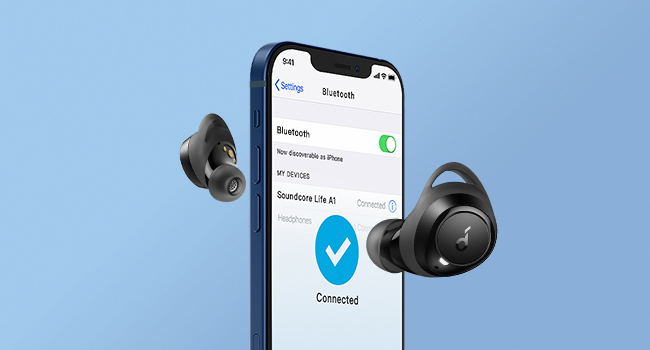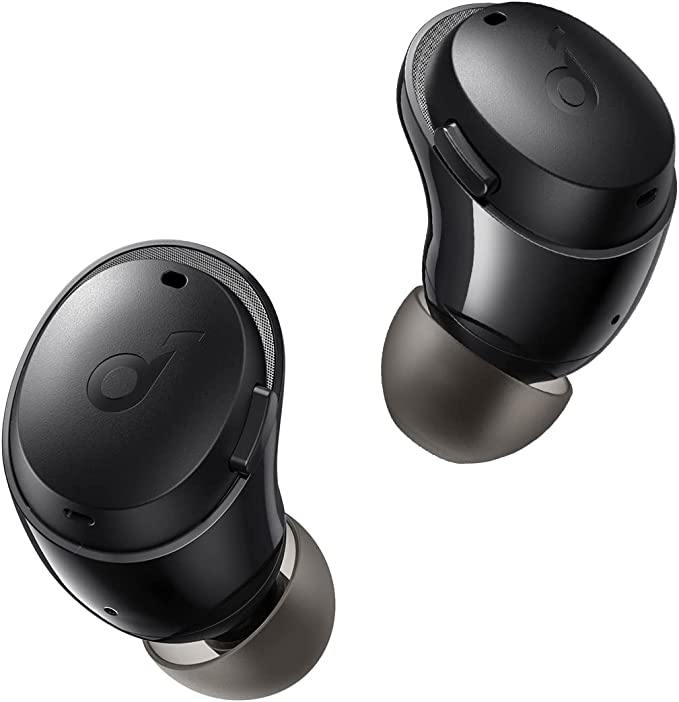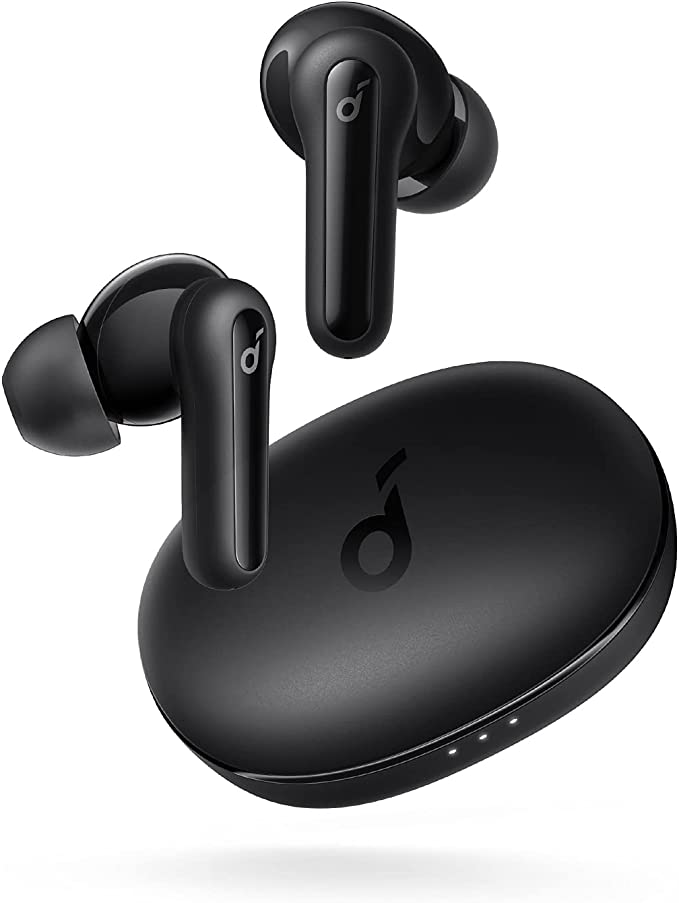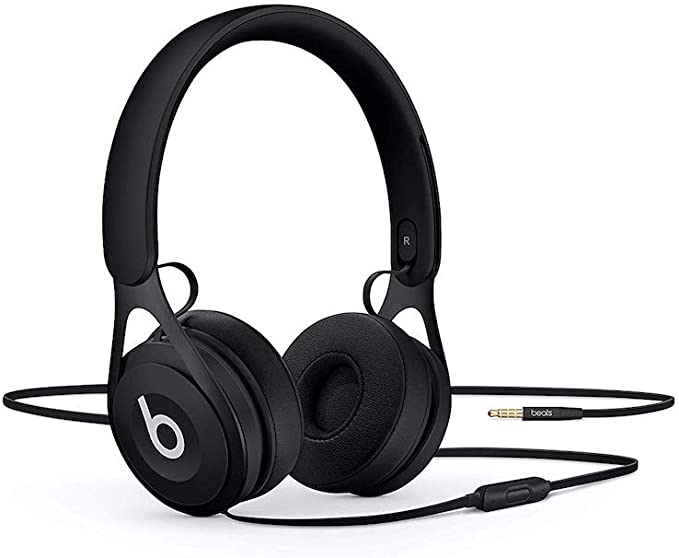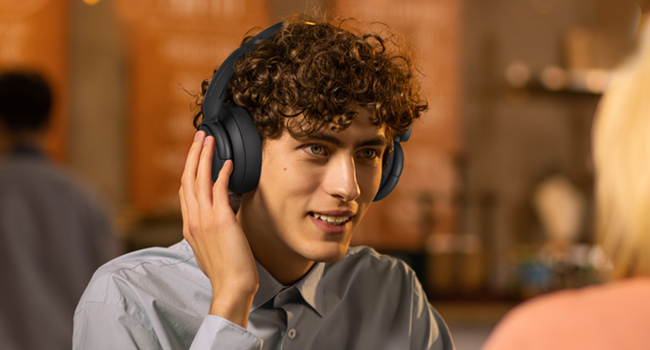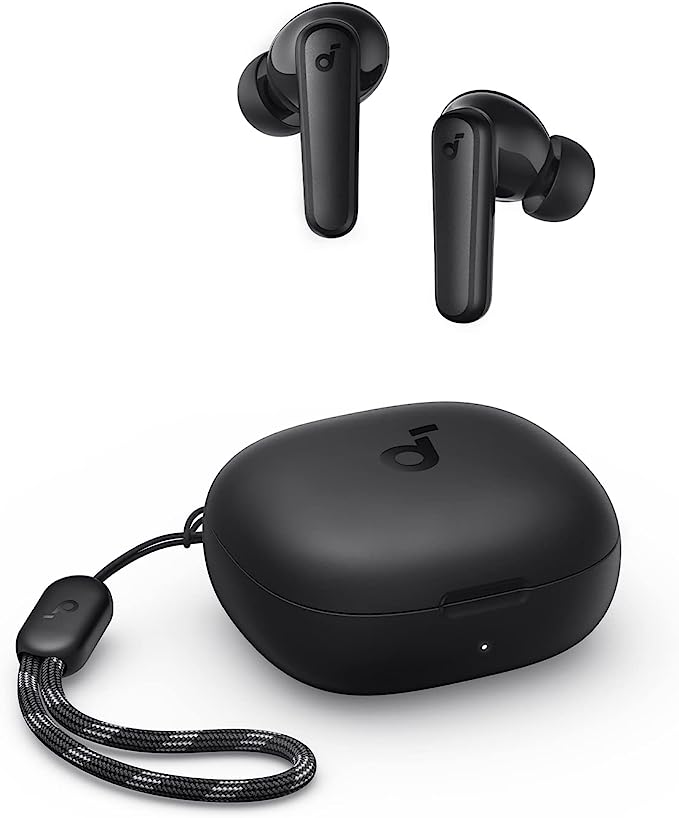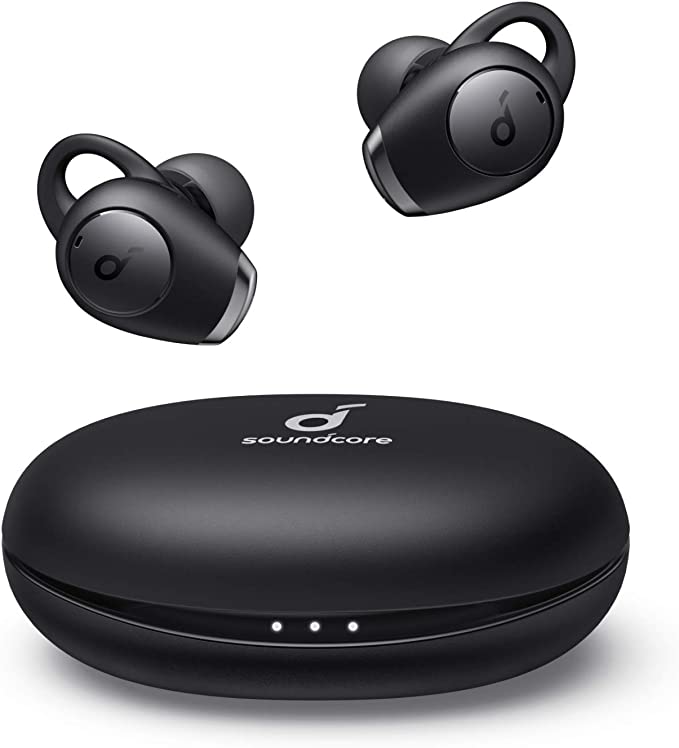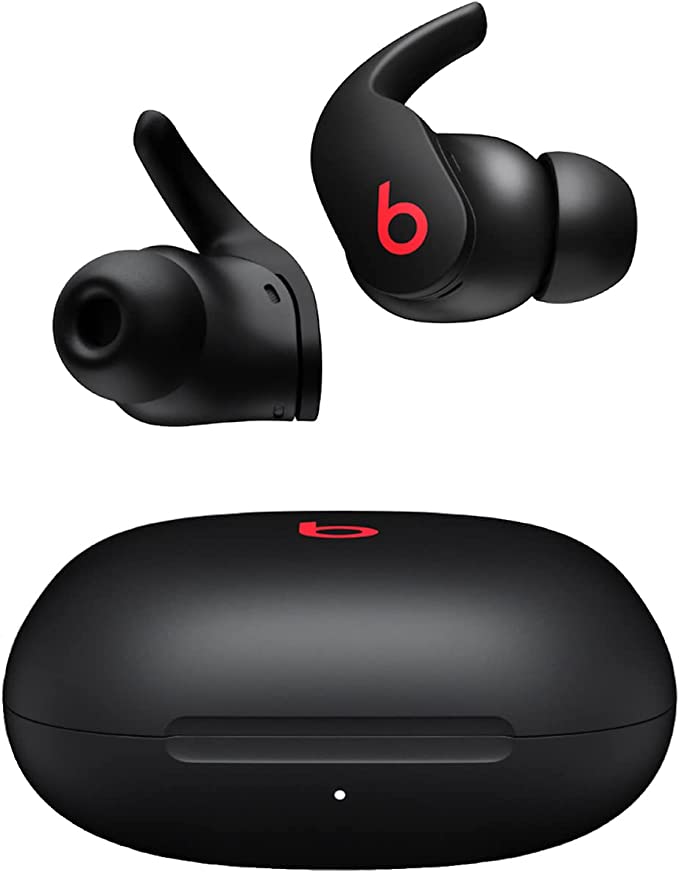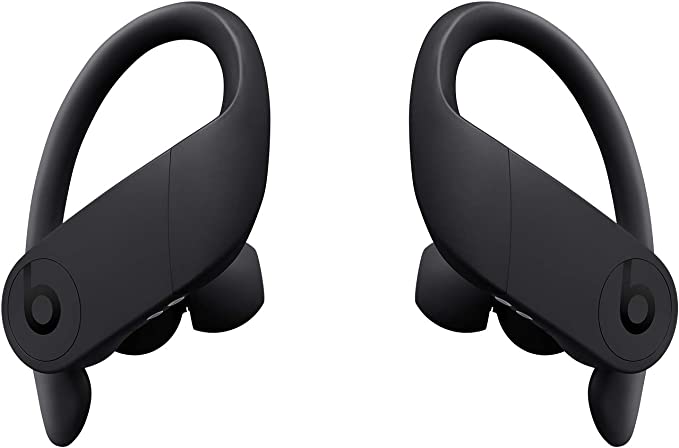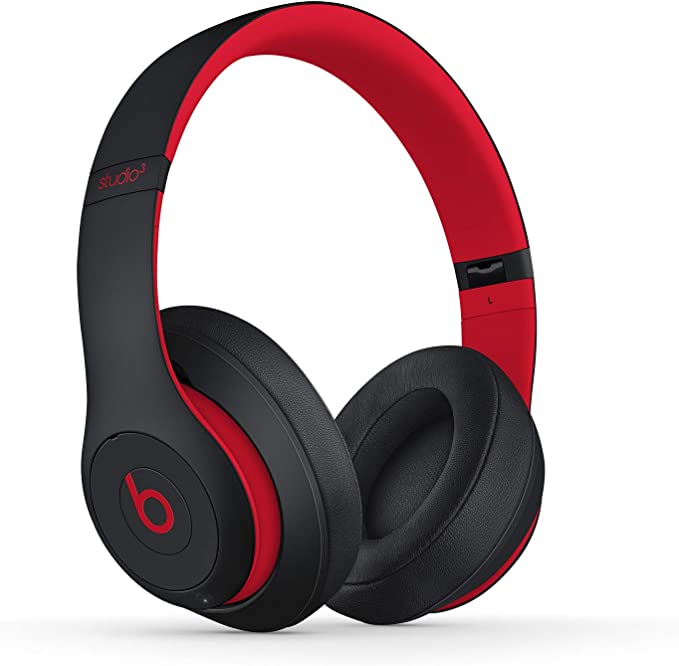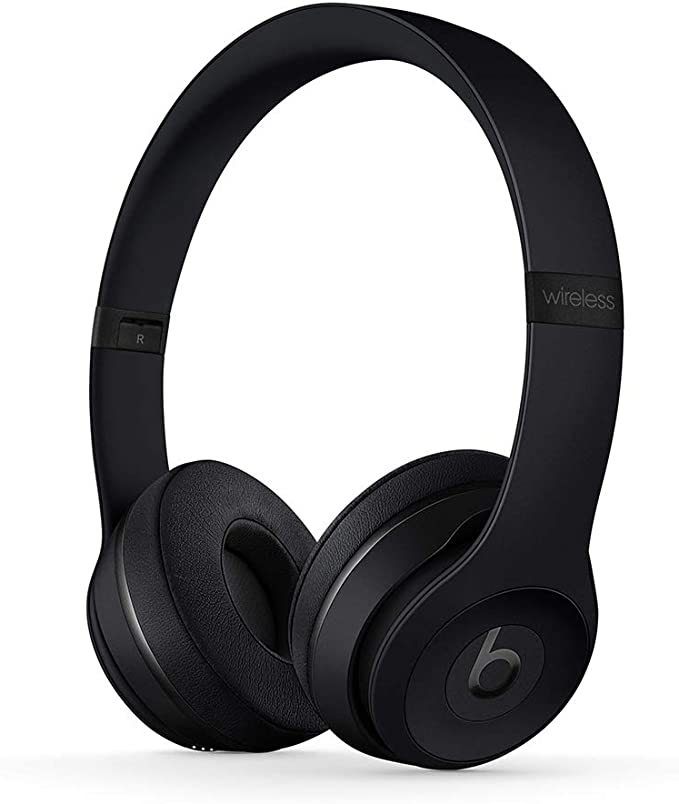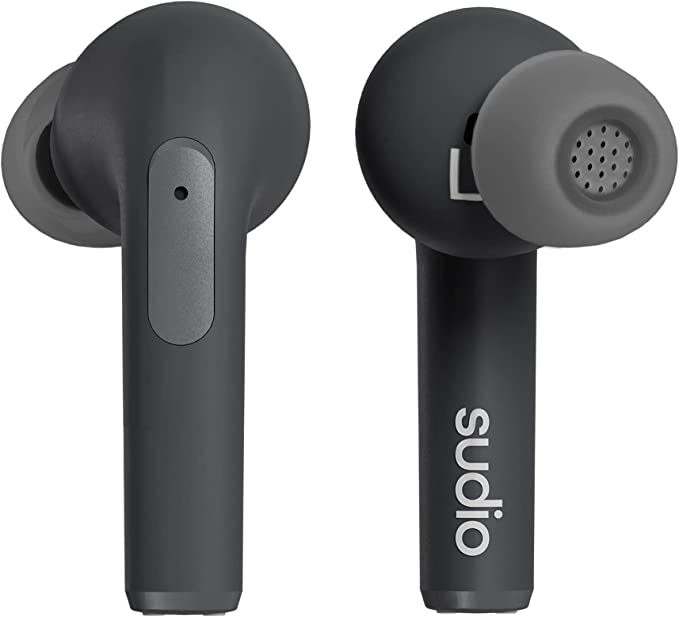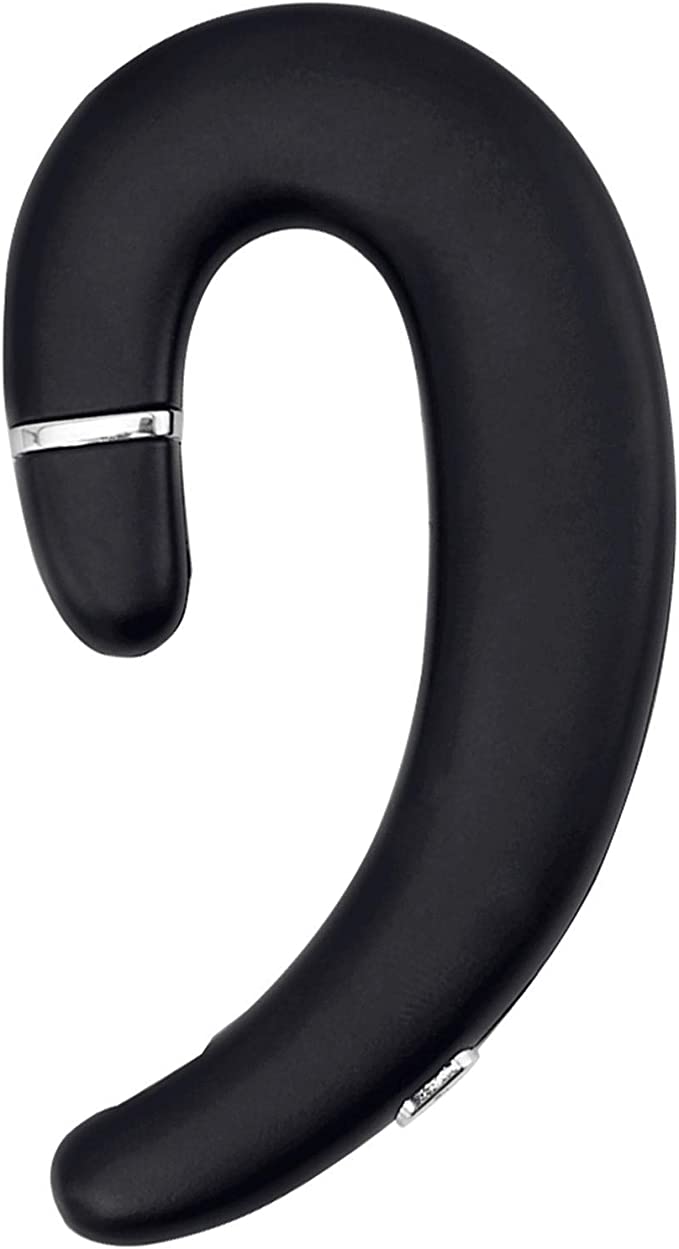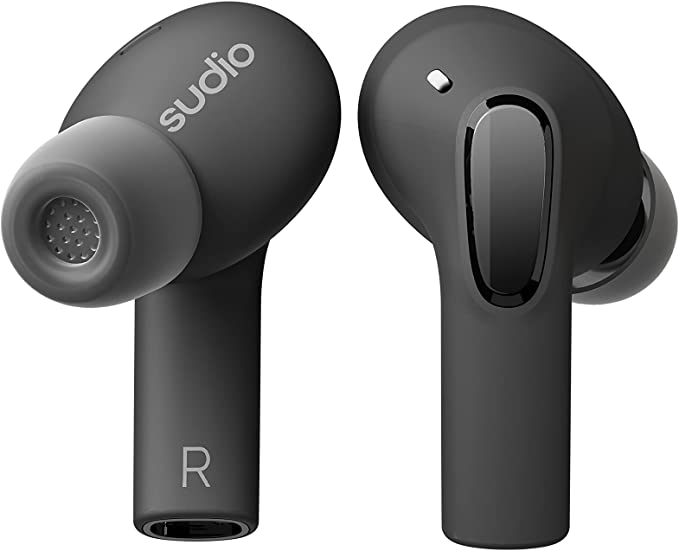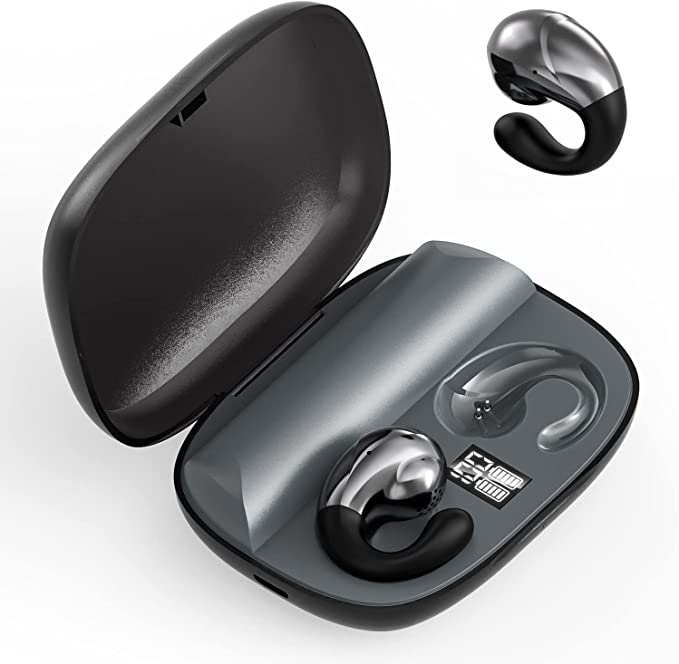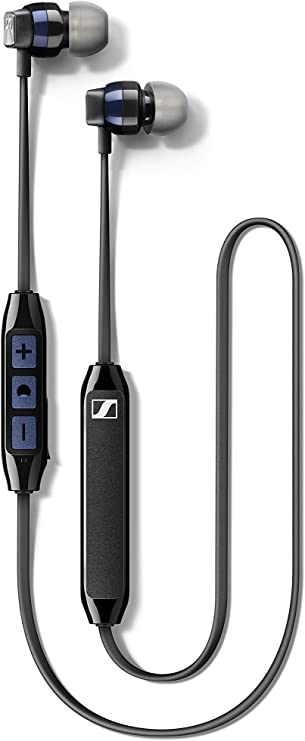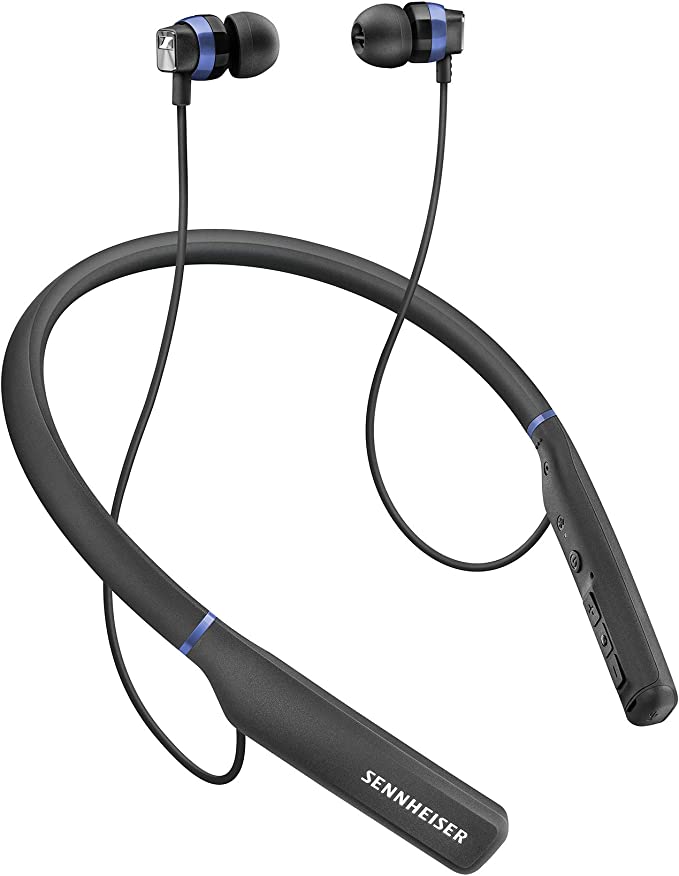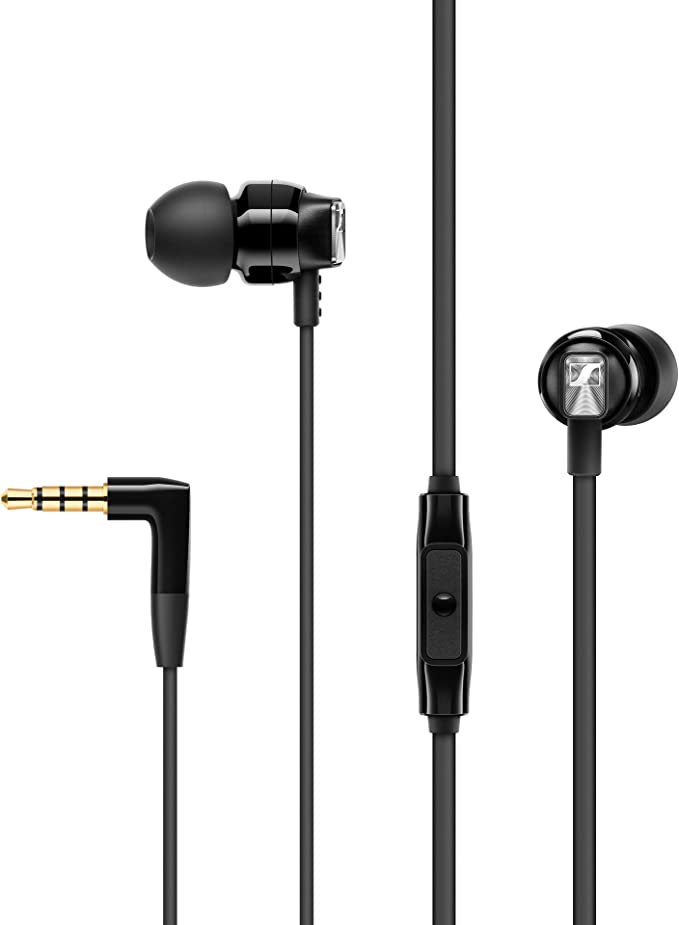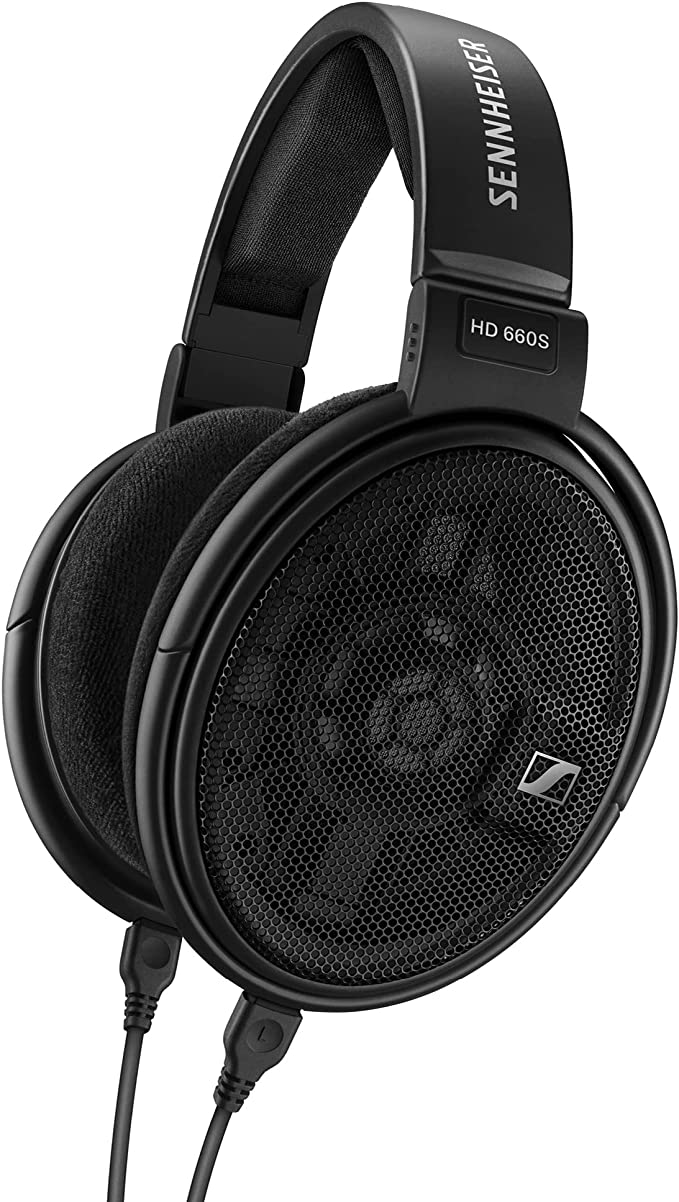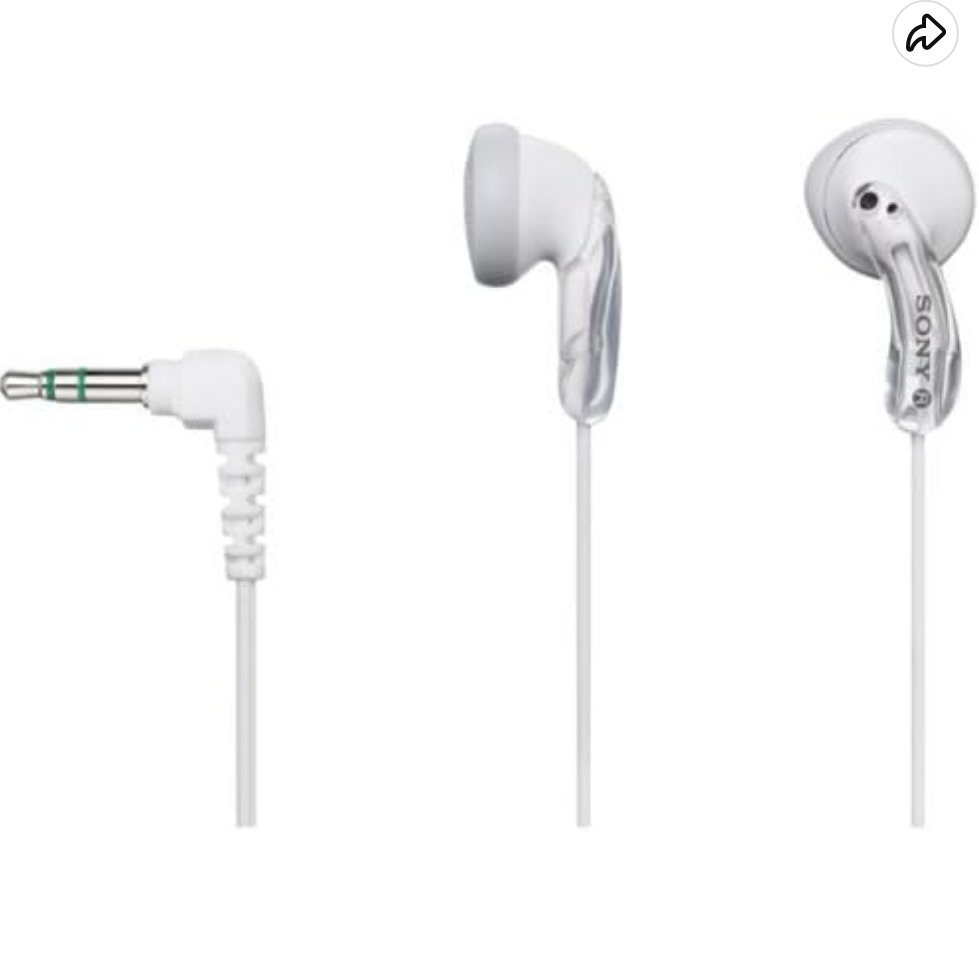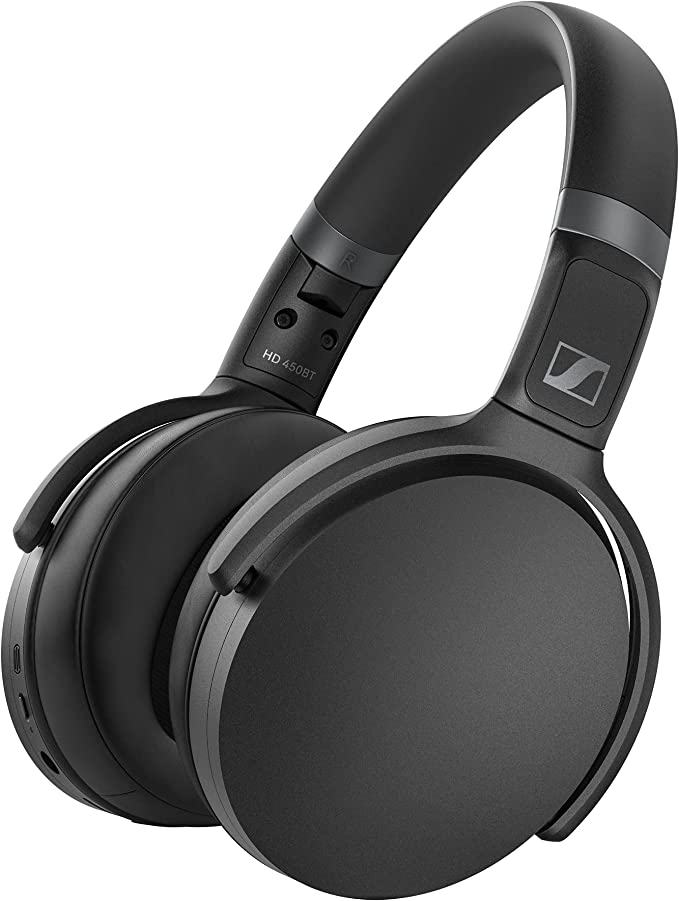Unipows Earbuds: Experience HiFi Stereo Sound with Noise Isolation
Update on March 7, 2025, 2:39 p.m.
The Symphony of Silence (and Sound)
Imagine you’re on a crowded bus, the rumble of the engine and the chatter of passengers filling the air. You long for a moment of peace, a chance to escape into your favorite music or podcast. Or perhaps you’re a student trying to concentrate on your studies, but the distractions of a busy household make it nearly impossible. In our increasingly noisy world, the ability to control what we hear – and what we don’t – has become more valuable than ever. This is where the science of sound, and technologies like headphones, play a crucial role. And, surprisingly, relatively simple wired earbuds like the Unipows can provide a great sonic escape.

What Is Sound, Anyway?
Before we dive into the specifics of headphones, let’s take a step back and consider the fundamental nature of sound. At its core, sound is simply vibration. When an object vibrates – whether it’s a guitar string, a loudspeaker cone, or your vocal cords – it creates pressure waves in the surrounding medium, usually air. These waves are not visible like waves on the ocean, but they behave in a similar way, spreading outwards from the source.
Think of dropping a pebble into a still pond. The impact creates ripples that travel across the surface. Sound waves are similar, but instead of water, they travel through air (or other materials, like water or metal – sound actually travels faster through solids and liquids!).
These sound waves have two key properties: frequency and amplitude. Frequency refers to how many times per second the air pressure oscillates back and forth. We perceive frequency as pitch. A high-frequency sound wave, with many oscillations per second, sounds high-pitched, like a whistle. A low-frequency sound wave, with fewer oscillations per second, sounds low-pitched, like a bass drum. We measure frequency in Hertz (Hz), which simply means “cycles per second.”
Amplitude, on the other hand, refers to the intensity of the sound wave – how much the air pressure changes during each oscillation. We perceive amplitude as loudness. A high-amplitude sound wave, with large pressure changes, sounds loud. A low-amplitude sound wave, with small pressure changes, sounds soft. We measure loudness in decibels (dB).

Your Ears: Nature’s Amazing Sound Receivers
Our ears are remarkable organs, exquisitely designed to capture and interpret these vibrations in the air. The process begins with the outer ear, the visible part that funnels sound waves into the ear canal. These waves then reach the eardrum, a thin membrane that vibrates in response to the pressure changes.
These vibrations are then amplified by three tiny bones in the middle ear, known as the ossicles. These are the smallest bones in the human body! Finally, the vibrations reach the inner ear, specifically the cochlea, a fluid-filled, snail-shaped structure. Inside the cochlea are thousands of tiny hair cells that are sensitive to different frequencies of sound. When these hair cells are stimulated by vibrations, they generate electrical signals that travel along the auditory nerve to the brain. It’s the brain that ultimately interprets these signals as sound, allowing us to perceive the richness and complexity of the auditory world.
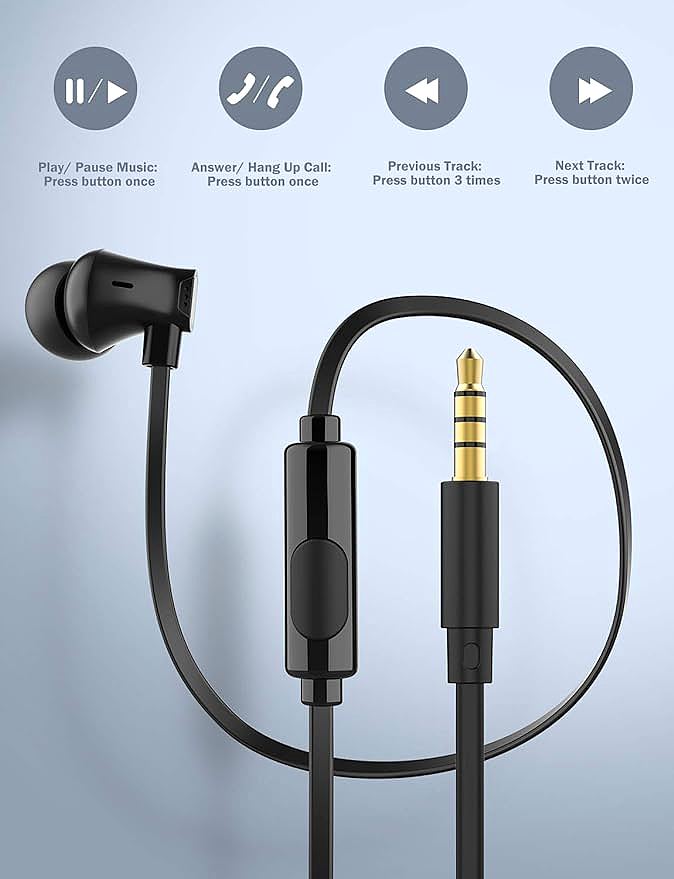
The Quest for Quiet: Sound Isolation vs. Active Noise Cancellation
Now that we understand how sound works and how we hear, let’s talk about how we can control our auditory environment. There are two main approaches to reducing unwanted noise: sound isolation and active noise cancellation (ANC).
Active noise cancellation is a sophisticated technology that uses microphones and electronics to actively counteract incoming sound waves. Here’s how it works: tiny microphones on the outside of the headphones “listen” to the ambient noise. The ANC circuitry then analyzes this noise and generates an “anti-noise” signal – a sound wave that is exactly the opposite of the incoming noise wave. When these two waves meet, they effectively cancel each other out, resulting in a significant reduction in perceived noise. This is based on the principle of wave interference.
Sound isolation, on the other hand, is a much simpler, passive approach. It relies on the physical properties of the headphones to block out external sounds. Think of it like putting your hands over your ears, or wearing earplugs. The materials and design of the headphones create a physical barrier that prevents sound waves from reaching your eardrums.
Unipows Earbuds: A Closer Look at Sound Isolation
The Unipows Earbuds utilize sound isolation to reduce unwanted noise. Their in-ear design, combined with the soft silicone ear tips, creates a seal within your ear canal. This seal is crucial, as it minimizes the amount of external sound that can leak into your ear. The better the seal, the more effective the noise isolation. This is why the Unipows Earbuds come with three different sizes of ear tips (small, medium, and large) – to ensure you can find the perfect fit for your ears. It’s like finding the right size shoe – a snug, comfortable fit is essential for optimal performance. A poorly fitting ear tip will not only be uncomfortable, but it will also allow more external noise to reach your ear, diminishing the effectiveness of the sound isolation. The material of the ear tips, in this case, a soft, pliable silicone, also plays a vital role. It conforms to the shape of your ear canal, creating a more complete seal than a harder, less flexible material would. The 45-degree angle design mentioned in the product description helps achieve this snug and ergonomic fit.
HiFi and Stereo: Recreating the Soundscape
While blocking out unwanted noise is a crucial part of the listening experience, the quality of the sound you do want to hear is equally important. The Unipows Earbuds are described as delivering “HiFi stereo sound.” Let’s break down what those terms mean.
“HiFi” stands for “High Fidelity.” In the context of audio, it refers to the accurate reproduction of sound. A HiFi system – whether it’s a pair of headphones, a set of speakers, or a complete audio setup – aims to reproduce the original recording as faithfully as possible, with minimal distortion or coloration. This means that the sounds you hear through a HiFi system should be as close as possible to the sounds that were originally captured by the microphones during the recording process.
“Stereo,” short for “stereophonic sound,” refers to the use of two separate audio channels – a left channel and a right channel. This is how we naturally hear the world, with our two ears receiving slightly different sound information, allowing our brains to perceive the direction and location of sounds. Stereo recordings and playback systems mimic this natural process, creating a sense of spaciousness and depth in the sound. When you listen to music in stereo, you can often distinguish the positions of different instruments – the guitar might seem to come from the left, the drums from the center, and the vocals from the right. This creates a much more immersive and realistic listening experience than mono (single-channel) sound.
Inside the Earbud: Drivers and How They Work
The heart of any earbud or headphone is the driver. This is the component that actually converts electrical signals into sound waves. Think of it as a tiny loudspeaker. Most earbuds, including the Unipows, use what’s called a dynamic driver.
A dynamic driver works on the same principle as a larger loudspeaker. It consists of three main parts:
- Diaphragm: A thin, lightweight membrane that vibrates to produce sound waves.
- Voice Coil: A coil of wire attached to the diaphragm.
- Magnet: A permanent magnet that creates a magnetic field.
When an electrical audio signal is sent to the voice coil, it creates a fluctuating magnetic field. This fluctuating field interacts with the permanent magnet’s field, causing the voice coil (and the attached diaphragm) to vibrate back and forth. These vibrations create the sound waves that travel to your ears. The quality of these components – the material of the diaphragm, the strength of the magnet, the precision of the voice coil winding – all contribute to the overall sound quality of the earbud. While the specific details of the Unipows’ driver are not provided, the description emphasizes “powerful bass,” suggesting a driver designed to effectively reproduce low-frequency sounds.
The Comfortable Fit: Ergonomics and Earbuds
Sound quality and noise isolation are paramount, but if your earbuds are uncomfortable, you’re not going to want to wear them for long. This is where ergonomics comes in. Ergonomics is the science of designing products to fit the human body comfortably and efficiently.
The Unipows Earbuds are described as having an “ergonomic design” with a “45-degree angle.” This angled design is intended to align with the natural shape of the ear canal, providing a more secure and comfortable fit. The lightweight nature of the earbuds also contributes to comfort, reducing the feeling of pressure or weight in your ears. As we mentioned before, having multiple sizes of ear tips allows for better adjustment for the listener.

A World of Sound at your Fingertips, Just not the volume
The Unipows Earbuds connect to your audio device via a standard 3.5mm audio jack. This is the traditional, ubiquitous connector found on countless devices, from smartphones and laptops to MP3 players and older audio equipment. It offers near-universal compatibility. The built in microphone is ideal for phone calls, online meetings, and using voice assistants, but the in-line controls, as noted in the product information, do not include volume adjustment. You’ll need to control the volume directly from your connected device. The included cable is advertized as “tangle-free” which should improve ease of storage.
Protecting Your Priceless Sense: Hearing Conservation
Finally, it’s crucial to remember that our hearing is a precious and delicate sense. Prolonged exposure to loud sounds can cause irreversible damage, leading to noise-induced hearing loss (NIHL). This is a preventable condition, and it’s essential to take steps to protect your hearing.
Here are some simple but effective tips:
- The 60/60 Rule: When using headphones, keep the volume at no more than 60% of the maximum volume, and limit your listening time to 60 minutes at a stretch. Take breaks to give your ears a rest.
- Be Aware of Your Surroundings: If you’re using headphones in public, be mindful of your surroundings. You should still be able to hear important sounds, like traffic or announcements.
- Use Noise-Isolating or Noise-Canceling Headphones: These can help you listen at lower volumes by reducing the amount of background noise.
- Consider Custom Earplugs: If you’re frequently exposed to loud noise (e.g., at concerts, construction sites), consider using custom-molded earplugs for maximum protection.
- Get Regular Hearing Checkups: If you’re concerned about your hearing, or if you’re regularly exposed to loud noise, get your hearing checked by an audiologist.
By understanding the science of sound, the technology behind headphones, and the importance of hearing conservation, you can make informed choices about how you listen and protect your precious sense of hearing. The Unipows earbuds, with their focus on sound isolation and HiFi stereo, provide one path into this world of sound, at an approachable cost.
